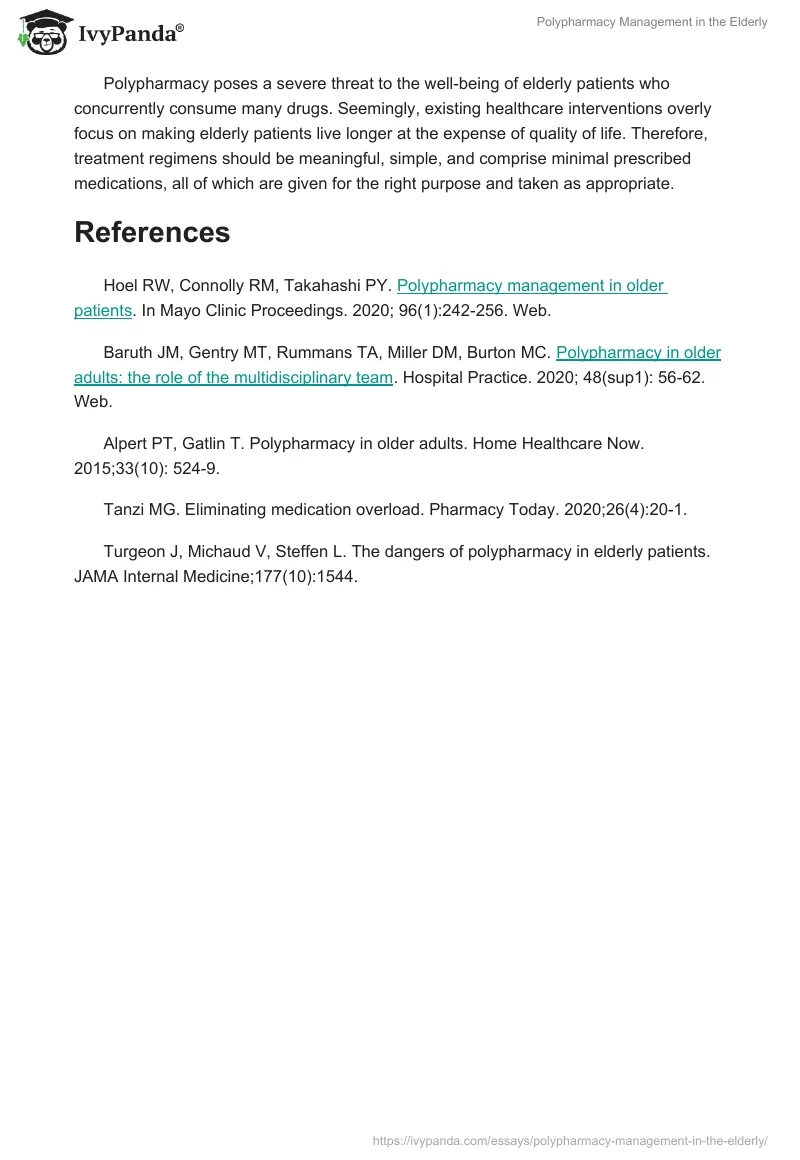Polypharmacy is convincingly the fiercest impediment to optimal patient outcomes among the elderly. This fancy word is another way of saying that a person is concurrently consuming several different medications [1-3]. Polypharmacy can render prescriptions for treating diseases and extending life among older adults counterproductive, demanding the proactive implementation of specific research-informed interventions.
The elderly increasingly rely on medications to manage different illnesses that accompany old age, but this is proving risky. Concerns abound regarding the unintended destructive effect of medication overload following the widespread use of a pill for every ill with which an elderly patient is diagnosed [4, 5]. Precisely, researchers have confirmed that polypharmacy motivates medication noncompliance, attracts adverse drug reactions, and increases fall, rehospitalizations, and healthcare costs [2, 3]. The numerous negative consequences listed herein confirm the urgent need to address this phenomenon to optimize the utility of years of centuries of scientific knowledge on treating and controlling diseases.
Several interventions exist for managing medications and polypharmacy among the elderly. Recent studies propose the involvement of a multidisciplinary team – patient/family, clinical pharmacists, and other caregivers – to educate clients about the risks of certain drugs and how to keep accurate records of medications [1, 3]. Additionally, healthcare professionals should utilize the Beers Criteria and START/STOPP strategies to assess a patient’s prescription, preferably monthly or after each provider visit [1-3]. During these routine checks, clinicians can assess medication adherence, monitor adverse drug-related reactions, explore patients’ use of OTC medications, and ensure that elderly patients only use one pharmacy to acquire drugs. Hoel et al. [1] even suggested shifting focus from longevity to vigilance, comfort, and satisfactory life quality. These measures help eliminate duplicate drugs, avoid contraindicated medicines, and help clients understand the need to adhere to their prescriptions.
Polypharmacy poses a severe threat to the well-being of elderly patients who concurrently consume many drugs. Seemingly, existing healthcare interventions overly focus on making elderly patients live longer at the expense of quality of life. Therefore, treatment regimens should be meaningful, simple, and comprise minimal prescribed medications, all of which are given for the right purpose and taken as appropriate.
References
Hoel RW, Connolly RM, Takahashi PY. Polypharmacy management in older patients. In Mayo Clinic Proceedings. 2020; 96(1):242-256. Web.
Baruth JM, Gentry MT, Rummans TA, Miller DM, Burton MC. Polypharmacy in older adults: the role of the multidisciplinary team. Hospital Practice. 2020; 48(sup1): 56-62. Web.
Alpert PT, Gatlin T. Polypharmacy in older adults. Home Healthcare Now. 2015;33(10): 524-9.
Tanzi MG. Eliminating medication overload. Pharmacy Today. 2020;26(4):20-1.
Turgeon J, Michaud V, Steffen L. The dangers of polypharmacy in elderly patients. JAMA Internal Medicine;177(10):1544.


